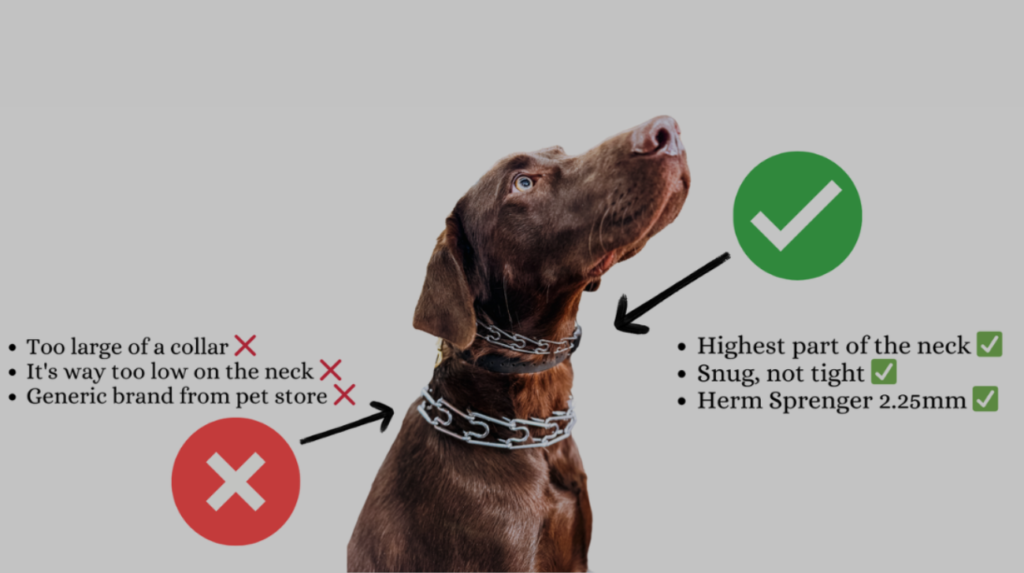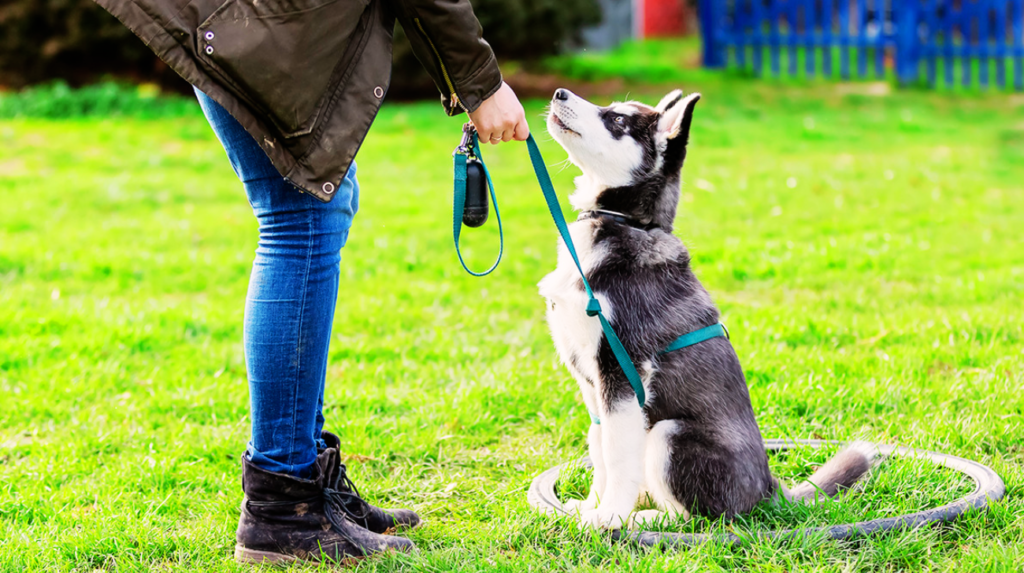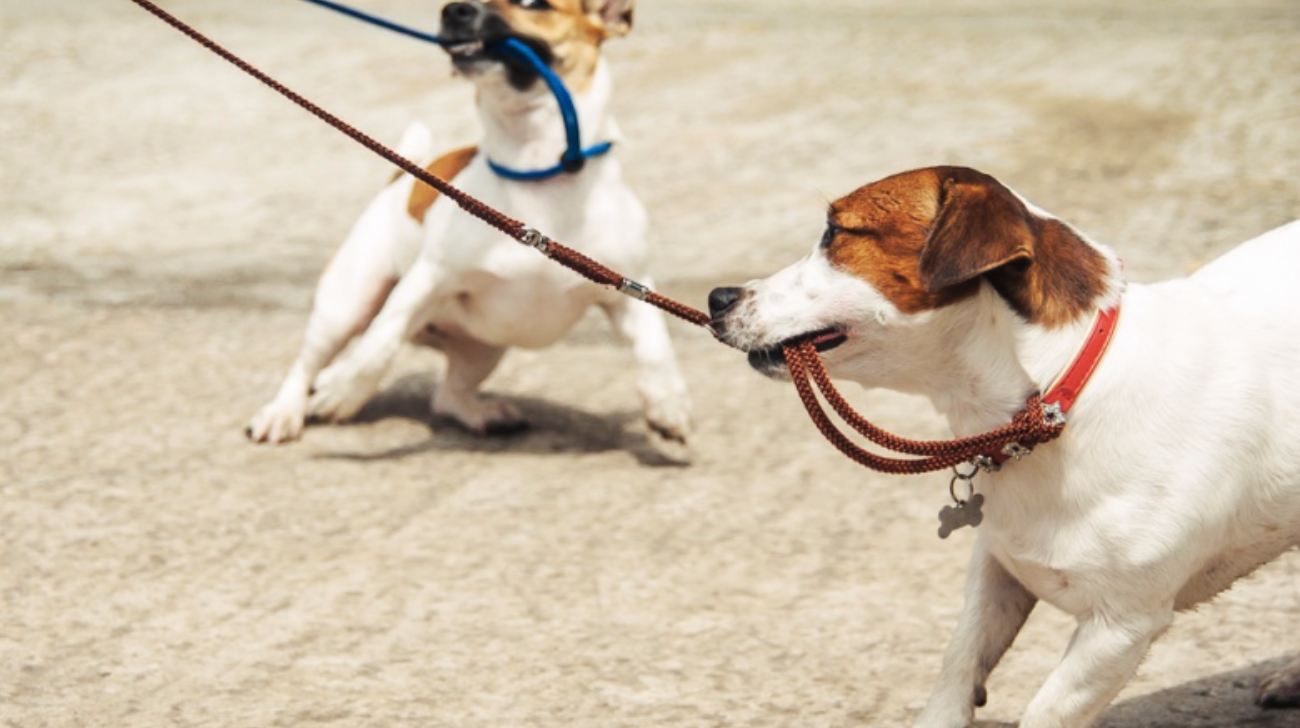Teaching a dog to walk properly on a leash can be one of the more challenging aspects of training, especially for new dog owners. Puppies, in particular, are often excitable, distracted, and keen to explore the world around them. However, with the right tools, training techniques, and patience, expert leash walking can become a skill that both you and your dog enjoy.
So, what’s the best way to go about teaching your puppy to walk on a leash without causing harm or frustration? Professional dog trainer Gregg Flowers weighs in on the use of correction collars, their effectiveness, and how to use them properly.
Discover why Afghan Hound collars are wide by exploring the unique characteristics of this breed and how wide collars enhance their comfort and style.
Blog Highlights
ToggleThe Right Collar for Leash Training
When it comes to teaching a dog to walk on a leash, Gregg Flowers recommends using a lightweight slip collar, also known as a slip lead or correction collar. “Almost always, the best collar to use for leash training is a lightweight slip collar,” says Flowers.

“I also like to use a standard 6-foot leash.” The slip collar is designed to tighten when the dog pulls on the leash but should release immediately when the dog stops pulling.
This collar is most effective when used in conjunction with correct positioning, timing, and technique. Find out what style dog collar is best for hounds to ensure comfort and safety for your furry friend.
The chain version of the correction collar is often referred to as a “choke chain,” but it’s important to note that if you’re choking your dog with the collar, you’re not using it correctly. “The idea behind the slip collar is to apply a mild correction, not to choke the dog,” Flowers explains.
The position of the collar on the dog’s neck is critical. “The bottom of your dog’s neck is the strongest part, but the very top of the neck is the most sensitive,” Flowers adds. “Even for a large breed like a Great Dane, the top of their neck is tender.
This is why the collar should be positioned higher up on the neck, around the area just behind the ears. This positioning allows you to have better control without causing pain.”
The Art of Correct Timing and Positioning
The key to using a correction collar effectively is timing and finesse. A well-positioned collar paired with appropriate timing can teach your dog to walk calmly by your side without relying on force or punishment.
The goal is for your dog to walk in the “heel” position, where their shoulders never exceed an invisible line extending sideways from your left shin. “This ensures that the dog’s head stays just in front of your leg, not ahead of you or pulling towards the ground,” Flowers explains. Here’s the correct placement:

By positioning the collar high on the neck and applying corrections at the right moment, you send the dog a clear message: walk by my side, not ahead of me.
This subtle form of leadership is important because it reinforces the idea that you are in charge of the walk. “For us, it’s a ‘walk,’ but for your dog, it’s a ‘patrol,'” Flowers continues. Here’s a video for your guide:
“We don’t want our dog in ‘tracking mode’ during the walk. You can allow your dog to sniff the ground every so often, but it’s important that you decide when and where it happens, which sends a message of leadership.”
The ideal size collar for English Springer Spaniel typically ranges from 14 to 20 inches, depending on the dog’s age and neck size, ensuring a comfortable and secure fit.
The Least Amount of Correction That Works
While some trainers may resort to using more intense tools like prong collars or shock collars (also called “E-collars”), Flowers stresses that this isn’t necessary in most situations. “I have used prong collars in the past, particularly with large male dogs who were out of control.
However, with experience, I’ve learned that the timing and finesse required to use a correction collar correctly is often all you need,” says Flowers. He advocates for using the least amount of correction that will work.
A correction collar should only be used to reinforce good behavior, not to punish the dog. Flowers explains that this is similar to how a mother dog corrects her puppies. “A mother dog doesn’t bite her pups right away; she growls or nips at them to correct behavior.
If that doesn’t work, then she might escalate her correction. The same principle applies to using a correction collar with your dog.” The recommended size collar for an English Cocker Spaniel usually ranges from 12 to 18 inches, providing a snug and comfortable fit for your dog.
What to Do if You’re Struggling with a Correction Collar
While the correction collar is highly effective when used correctly, it can take some practice to get the timing and positioning right. If you’re struggling with using the collar properly, Flowers recommends a second option: the Gentle Leader, a type of halter that can be used to teach dogs to walk on a leash.
The Gentle Leader works by gently guiding the dog’s head and preventing them from pulling forward, making it easier to control their movements. “This can be an effective tool for teaching healing, but like the correction collar, it requires some time to learn how to use it properly,” Flowers says.

To find the perfect fit, learn more about what size collar for a Bichon, ensuring your dog’s comfort and safety.
At the end of the day, like any other aspect of dog training, patience is key. “Training takes time. It’s not just about the tools you use, but about consistency, communication, and understanding your dog’s behavior,” Flowers advises. “If you approach the process with patience, you’ll find that your dog will begin to walk more calmly and respond better to corrections.”
Leash Training Requires Patience and Precision
Leash training is a process that requires practice, patience, and the right tools. For most dogs, a lightweight slip collar is the best option for teaching them how to walk calmly on a leash.
The key is using the correct timing and positioning to ensure that your dog learns to walk politely at your side without excessive pulling or tugging. If you’re having difficulty with the correction collar, consider a Gentle Leader as an alternative.
Discover the ideal option by exploring what is the best collar material for a Bichon Frise to ensure your pet’s comfort and durability.
By focusing on proper technique and making training a consistent, positive experience, you can help your dog master leash walking in a way that’s comfortable and effective. “Remember,” Flowers concludes, “the goal is always to use the least amount of correction needed to get the behavior you want. That’s how you build a respectful and obedient relationship with your dog.” Information source: Herald Tribune.








